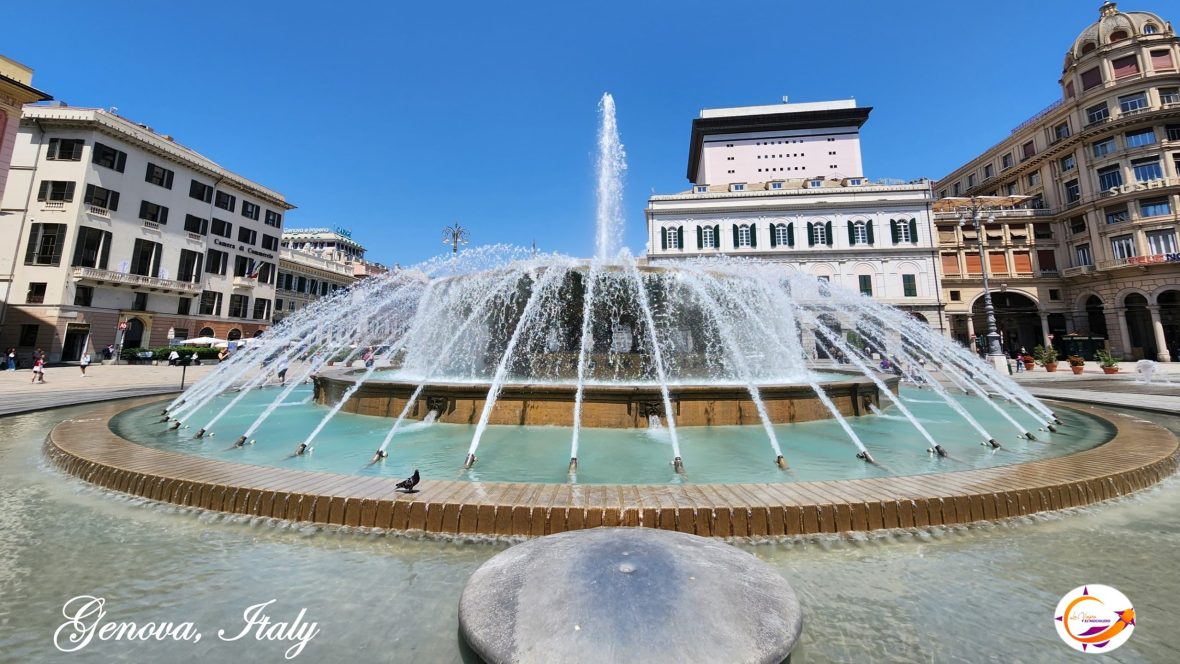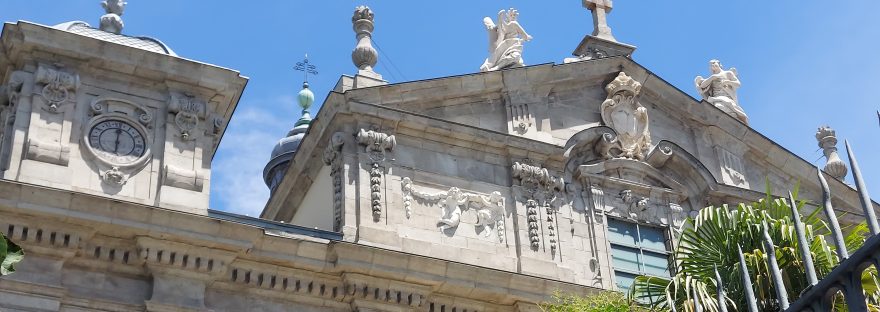The church of which we are going to share with you a bit of its history, we had already had our eye on it on a previous visit to Madrid. It was not open on that occasion, so we put it on the list of places to visit on our next visit. This time, we had the opportunity to enter and were delighted with its architecture that projects a lot of elegance.
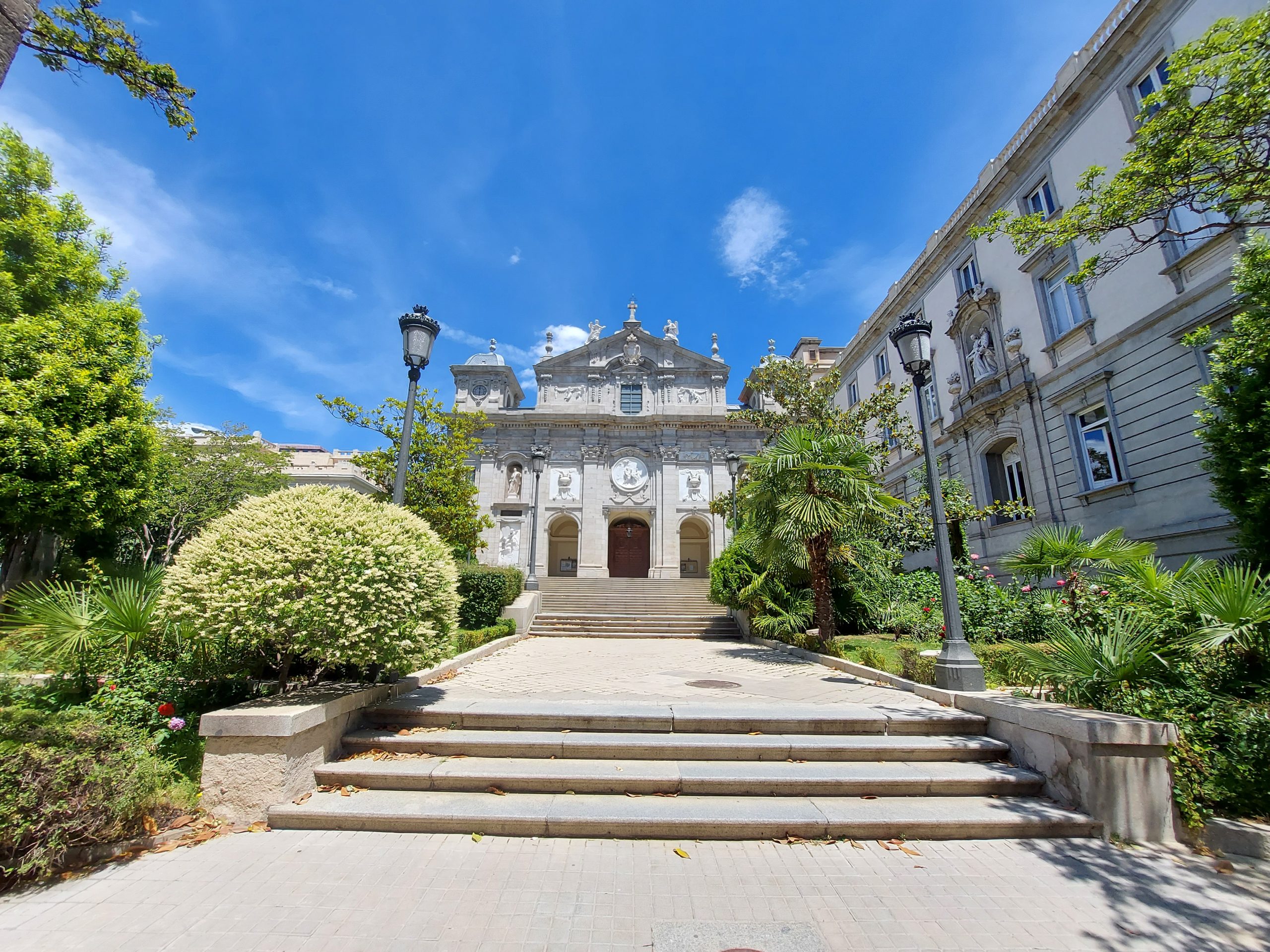
It was crossing the Chueca area that we arrived at the Church of Santa Barbara, the main parish of the Salesas neighborhood (CONFIRM THE LOCATION). Originally, it belonged to the Convent of the Salesas Reales, now disappeared and converted since 1870 into the Palace of Justice, seat of the Supreme Court. The church continued to be open for worship and in 1891 was constituted as a parish church under the patronage of Santa Bárbara. The church has the status of an Asset of Cultural Interest.
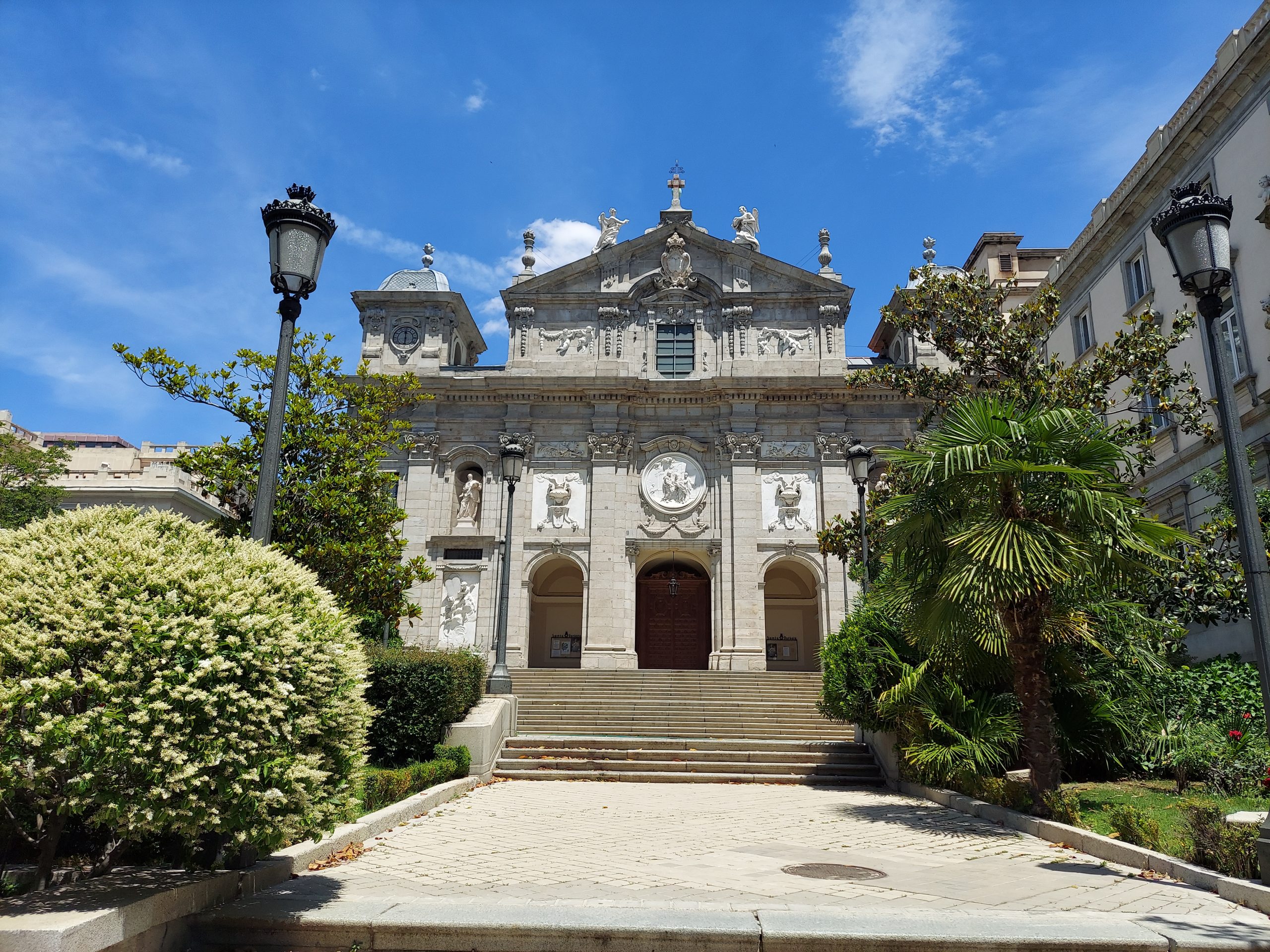
The church of Santa Barbara owes its name to the wife of King Ferdinand VI, Queen Barbara de Braganza. The queen founded the convent of the Salesas Reales in the year 1748, with the aim that young noblewomen would be educated there and that it would eventually serve as her place of retirement, once the time came for the king’s death. To her misfortune, she was to die before her husband, and was unable to enjoy her retirement in the convent.
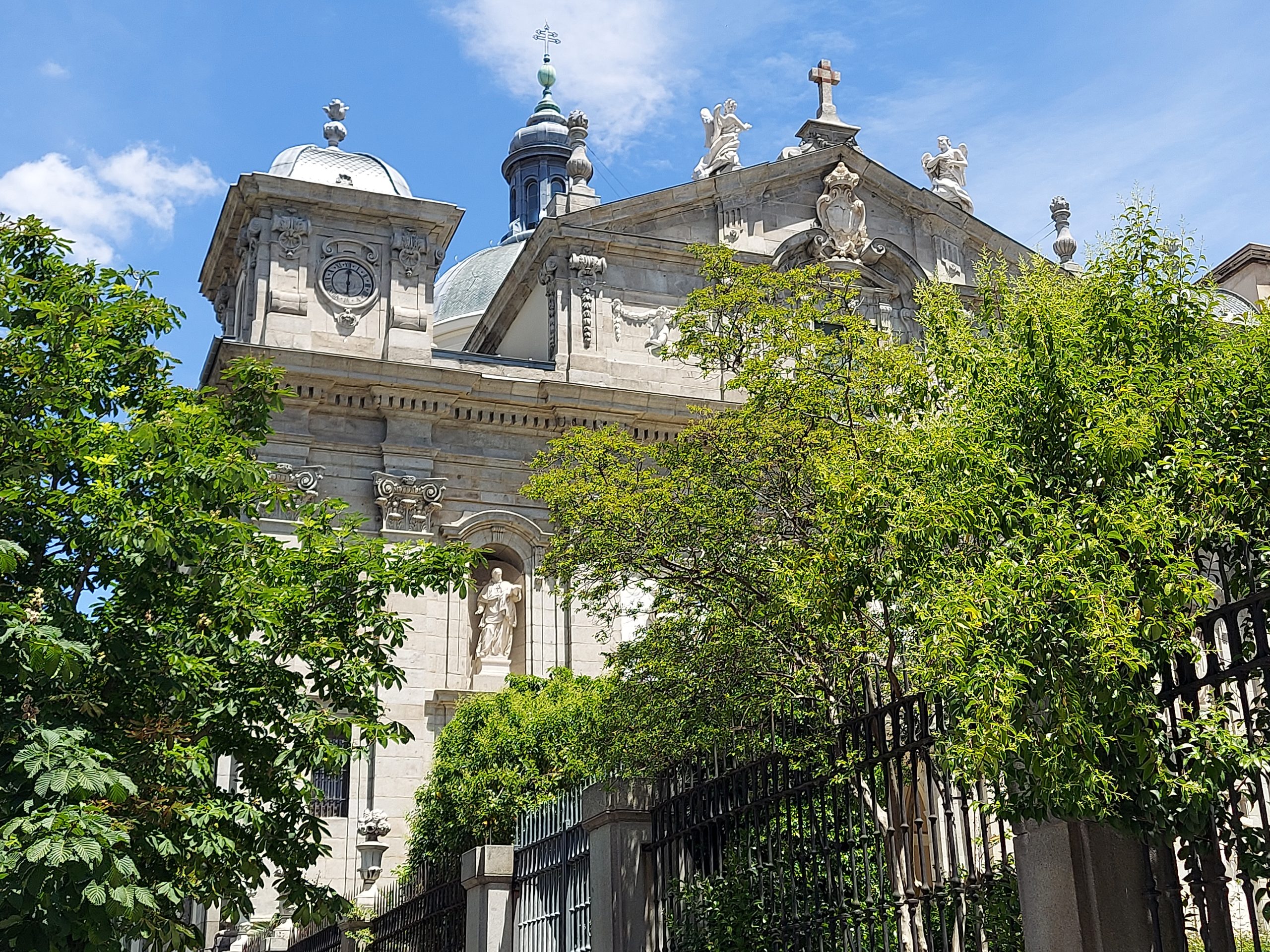
This temple was designed by the Frenchman Carlier and then modified and developed by the quantity surveyor Francisco Moradillo. He was in charge of the direction of the work, to whom we owe the entire second body, with the towers and the dome with its drum. It was built in only 7 years, being inaugurated in 1758.
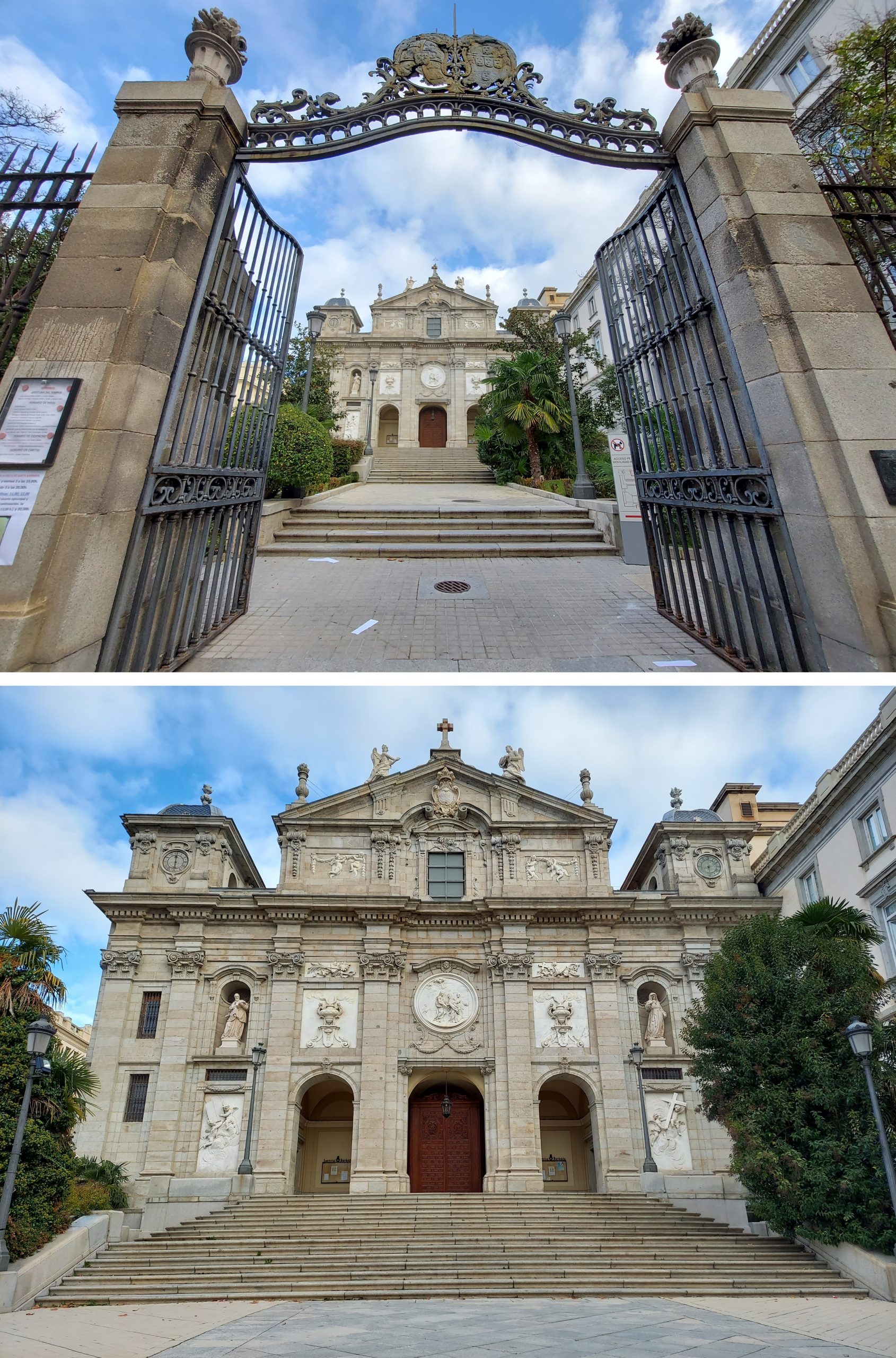
Arriving at the entrance of the Church of Santa Barbara, we are greeted by a grand staircase, which, together with its elegant facade, creates a majestic ensemble. The structure was built in brick and masonry and its main facade, which is monumental, forms a triple portico topped by a pediment between two quadrangular towers of a single body.
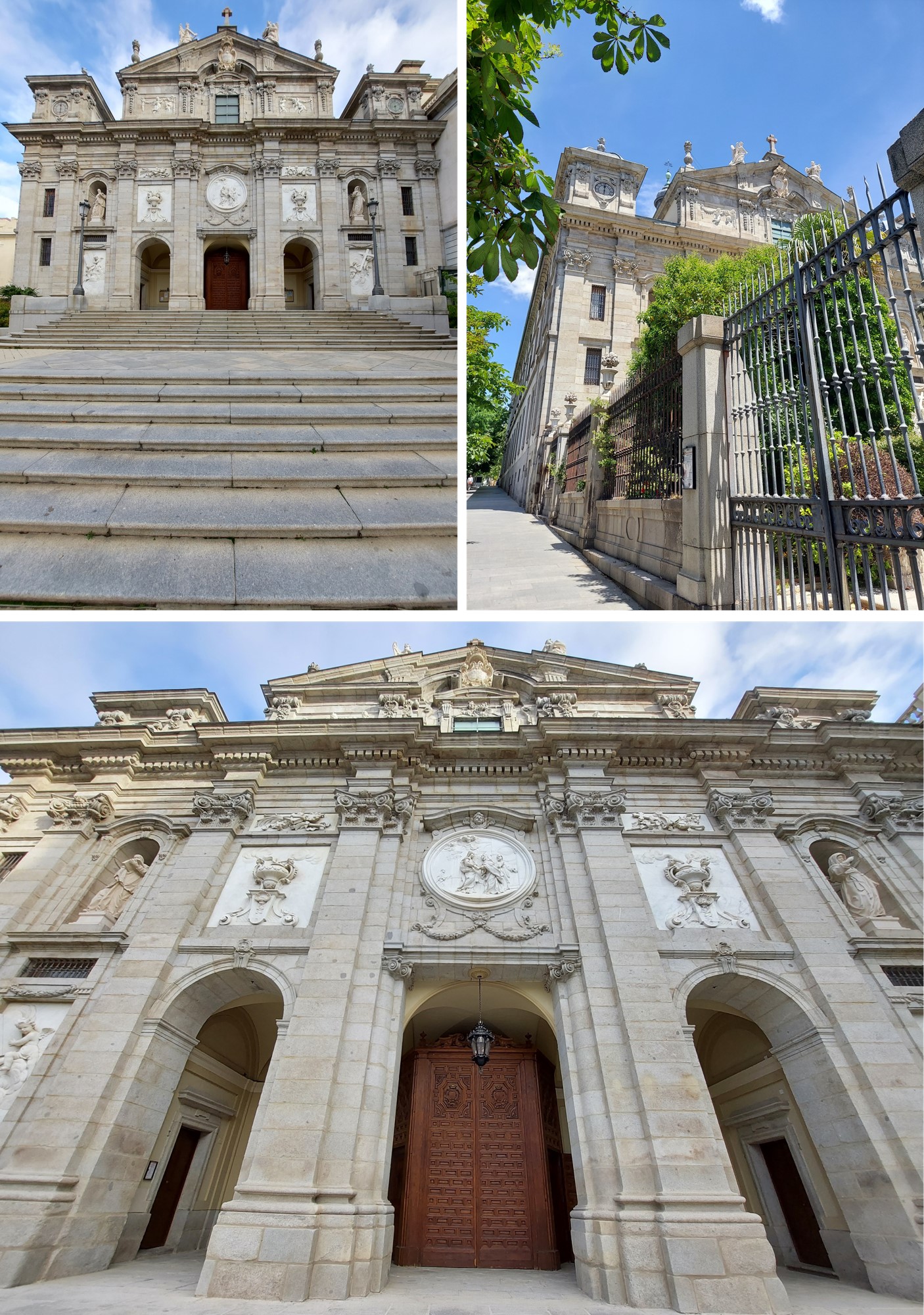
The façade is ornamented with reliefs by the Italian sculptor Juan Domingo Olivieri, and work of Alfonso Giraldo Bergaz, are the statues of the niches of San Francisco de Sales and Santa Juana Francisca. To Olivieri also belongs the group of the Holy Family, originally in the doorway of the convent and moved to the wall that forms an angle with the facade of the church in the atrium.
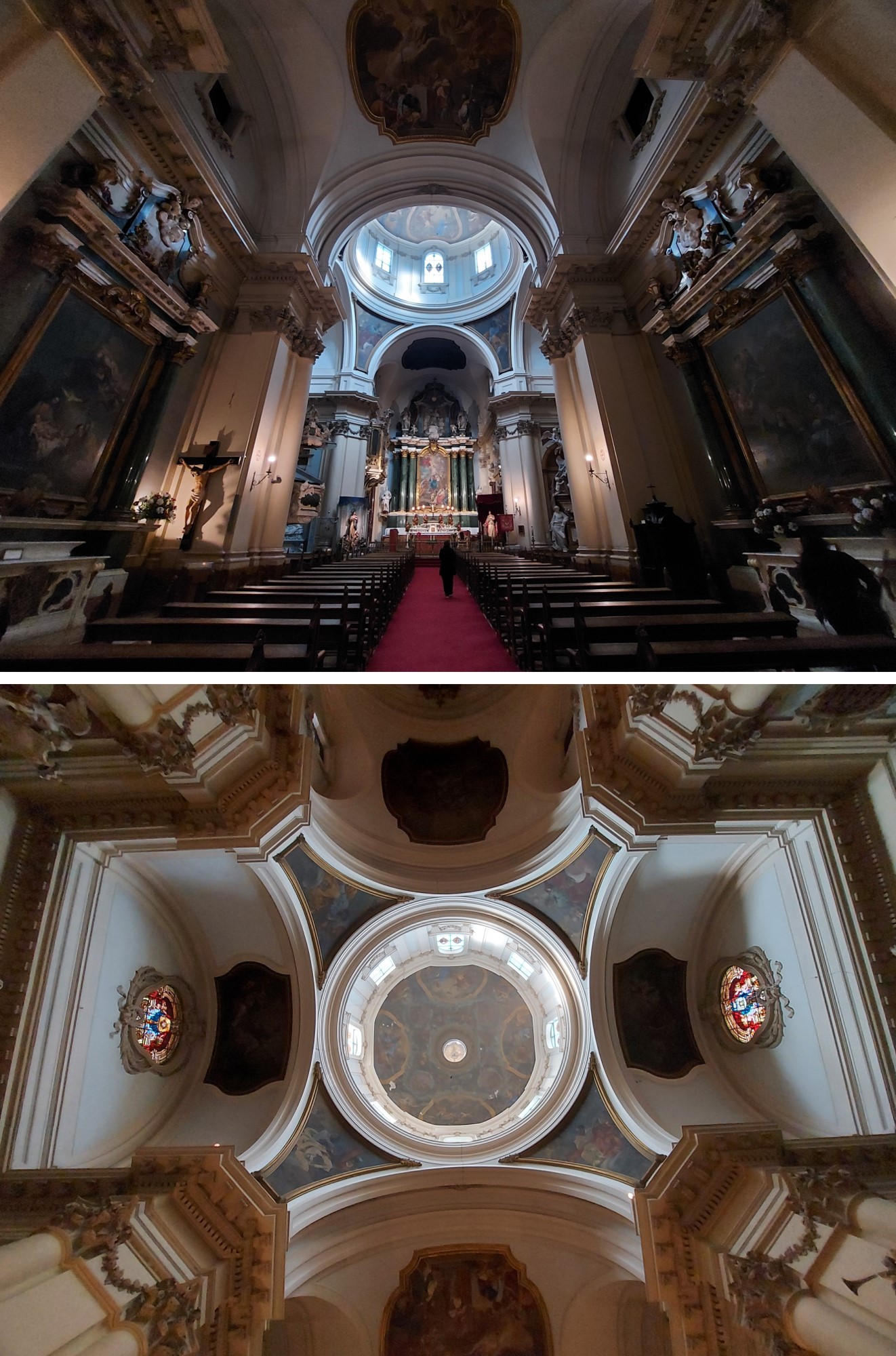
The plan of the Church of Santa Barbara has a single nave in the form of a Latin cross. It has “niche” type chapels on the sides, covered with barrel vaults with lunettes (the mostly round openings seen at the top) in the nave and transept arms and with a dome on pendentives (the triangular piece under a dome that allows the dome to rise above the floor), drum and lantern over the transept. In its execution Moradillo simplified many of the curves and broken lines with which it had been projected, softening the rococo effect.
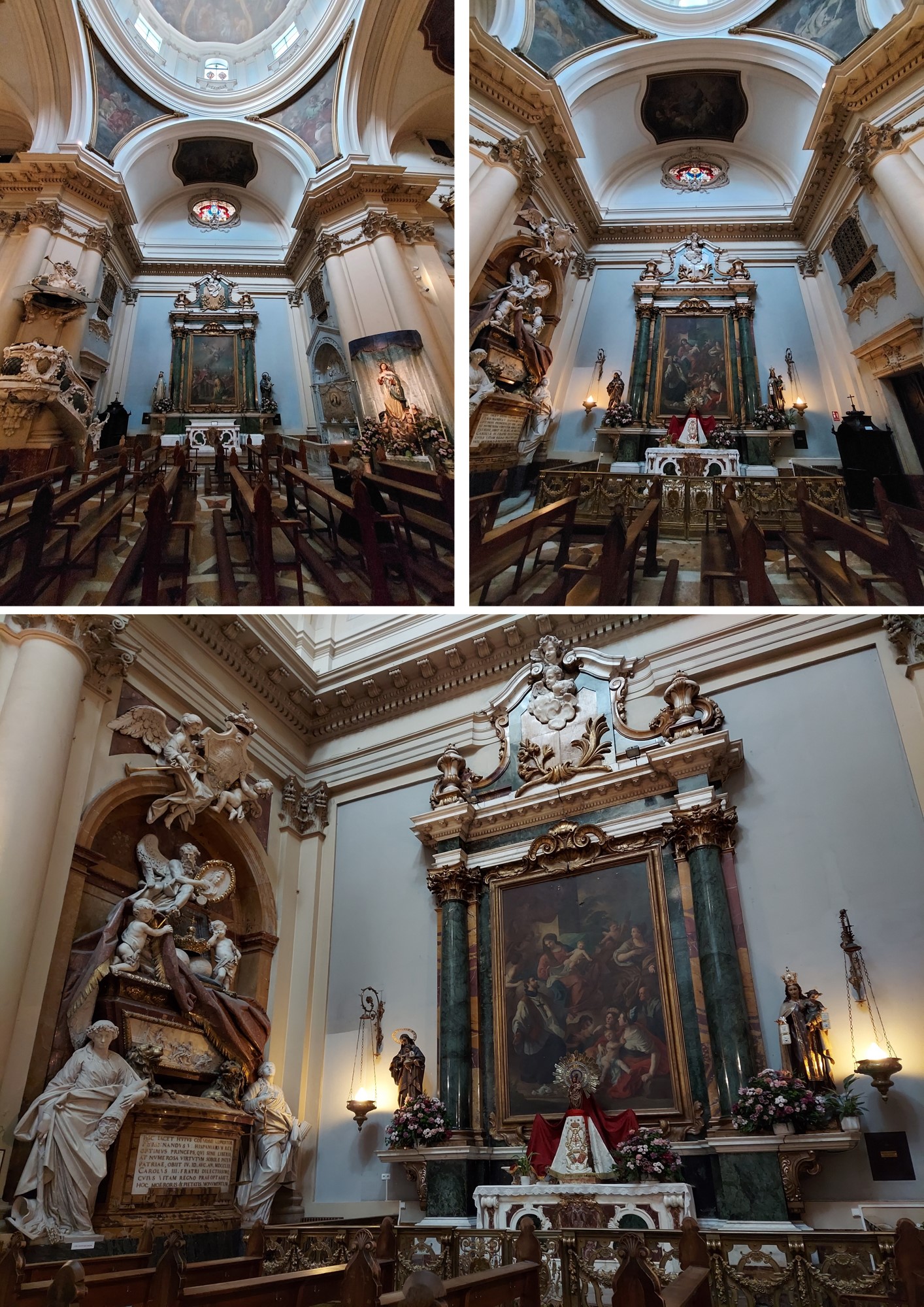
The interior of the church is considered one of the most sumptuous of Madrid’s baroque style and its decoration is the work of Italian sculptors. In rococo style, combining classical and baroque elements, the decoration with bronzes, marbles and multicolored stones is outstanding. The fresco paintings that cover the vaults are by the Velázquez brothers. They depict scenes from the life of St. Francis de Sales in the nave, and the patron saints of the founders in the arms of the transept: St. Ferdinand before the Virgin and St. Barbara before the Redeemer.
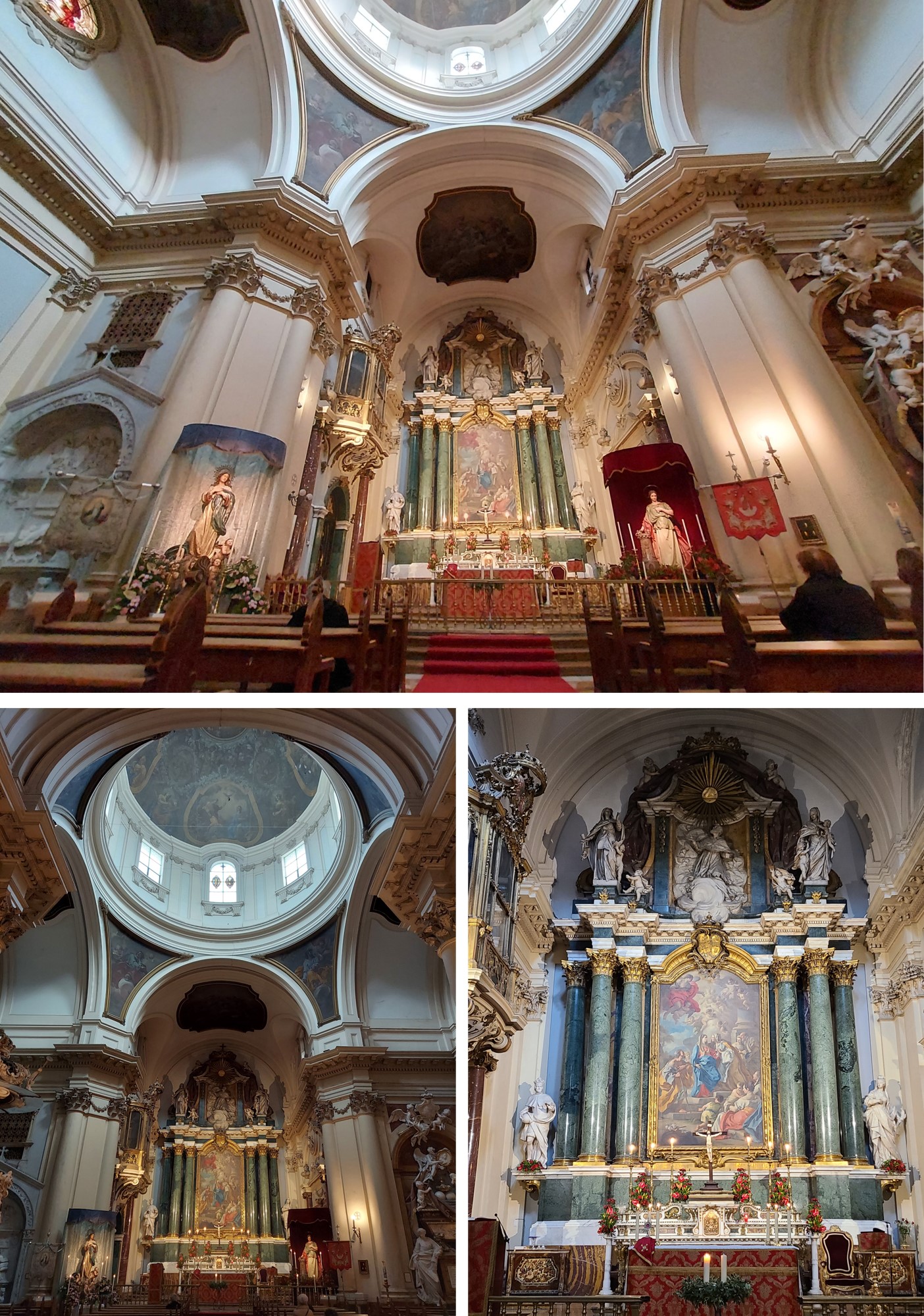
In the presbytery, or area of the High Altar, the main altarpiece stands out, where colored marbles are used, and an altar table also made of marble with lapis lazuli inlays. In the center of the altarpiece there is an oil painting of The Visitation, work of the Neapolitan painter Francesco de Mura, crowned by the royal coat of arms. On the sides, two sculptures of St. Barbara and St. Francis de Sales, slightly larger than life size, are the work of Juan Domingo Olivieri, as well as the relief of the attic, with the Prayer of St. Francis de Sales, and the sculptures of Charity and Religion, all in white marble. In the vault, a painting by the González Velázquez brothers represents the Coronation of the Virgin.
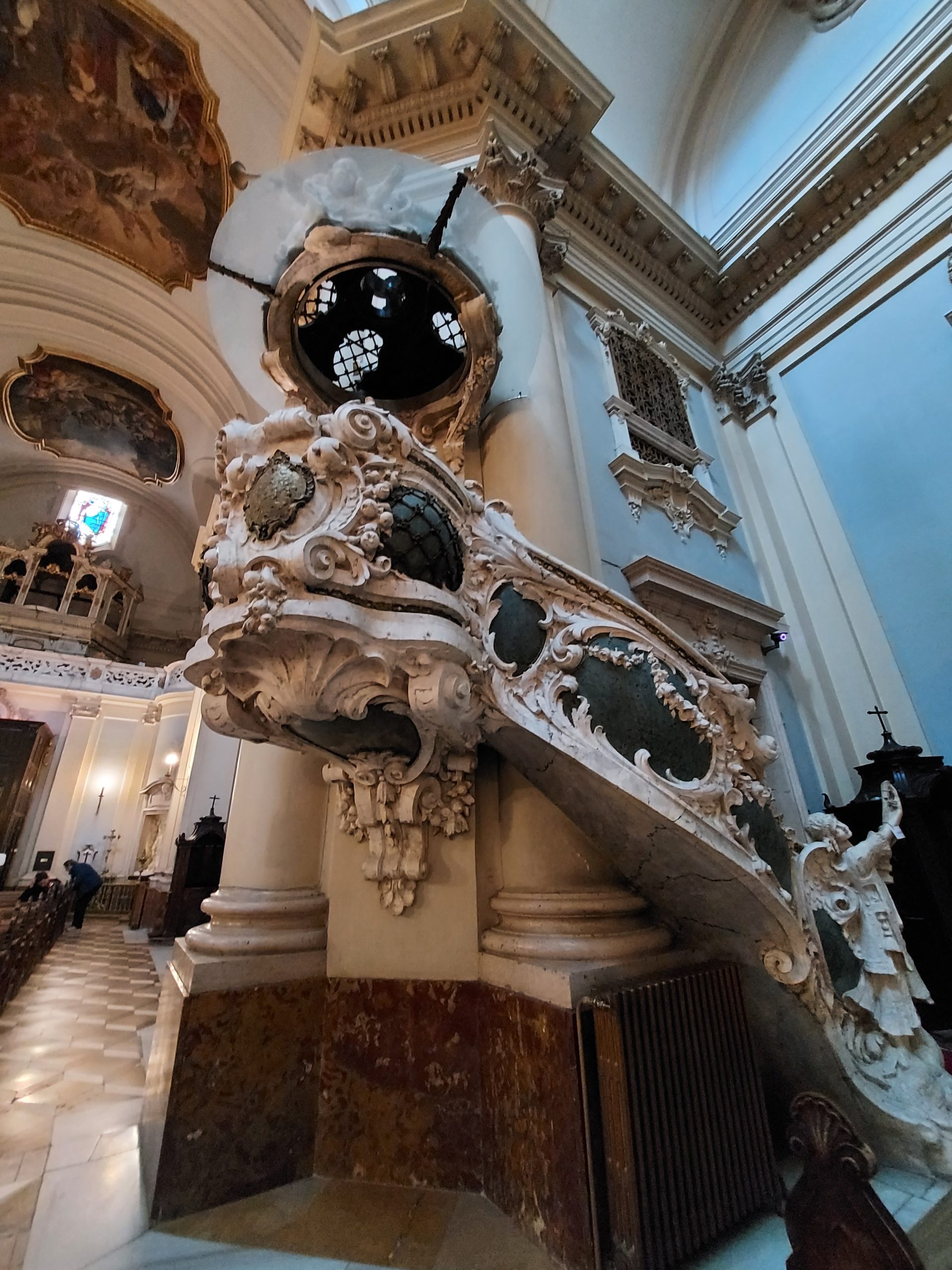
One of the most striking pieces of the Church of Santa Barbara is its pulpit. It is a baroque piece adorned with angels and censers, of great beauty.
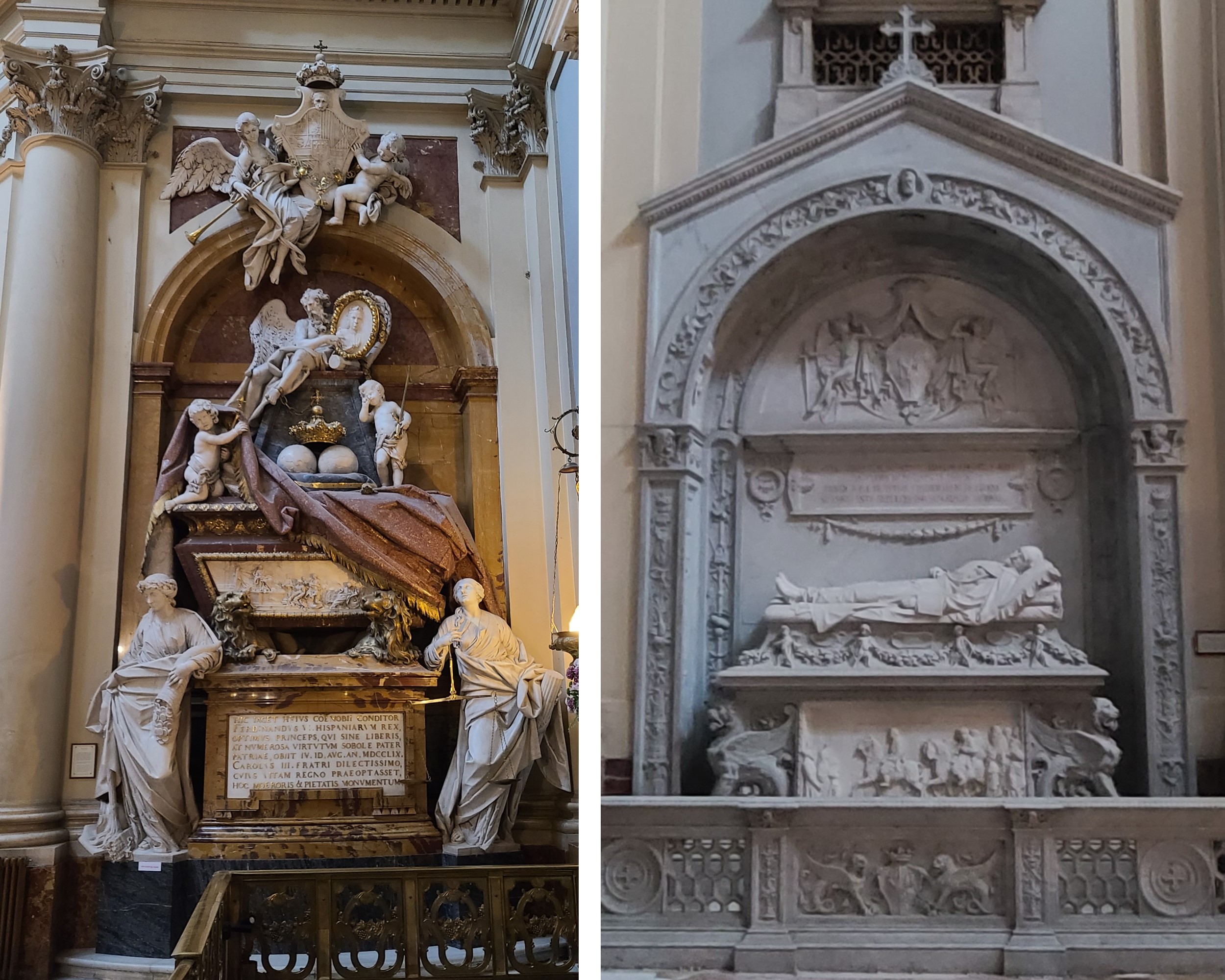
It is in this church that the funerary monuments of King Ferdinand VI and Queen Barbara de Braganza, who were buried there according to their wishes, are preserved. They are among the few kings of Spain to be buried outside El Escorial. The tomb was built according to the model of the architect Francisco Sabatini. It is also the mausoleum of Leopoldo O’Donnell, three times president of the Spanish Council of Ministers in the 19th century.
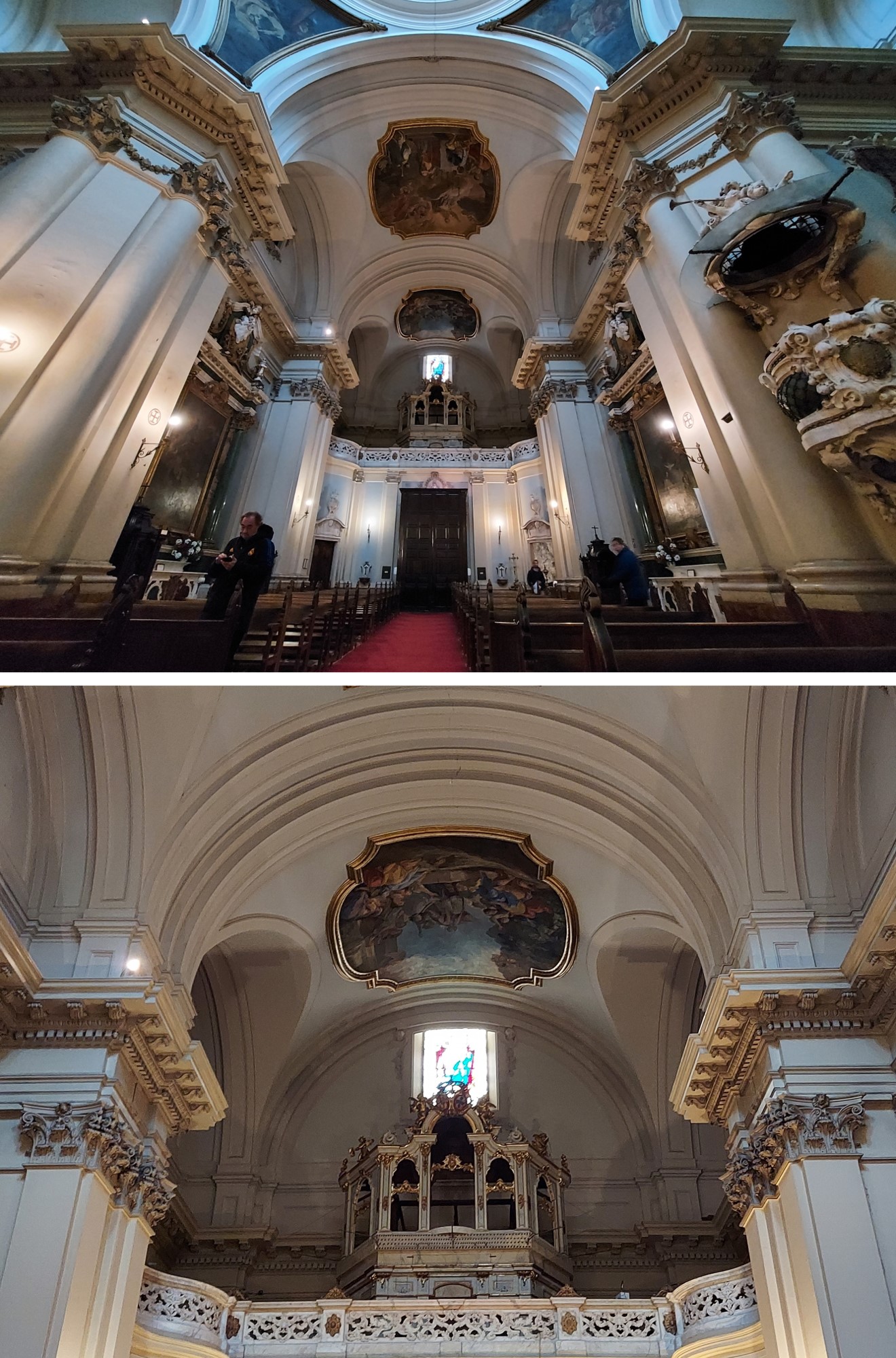
The choir loft, located at the foot of the nave, has a railing carved in white marble with openwork drawings throughout. In this choir there is an organ built in Naples by Friar José de Monticelli, commissioned by Farinelli, His Majesty’s Treasury Advisor. The piece of furniture with golden ornaments and crowned with the royal arms was made in Madrid. It is currently out of service and awaiting restoration.
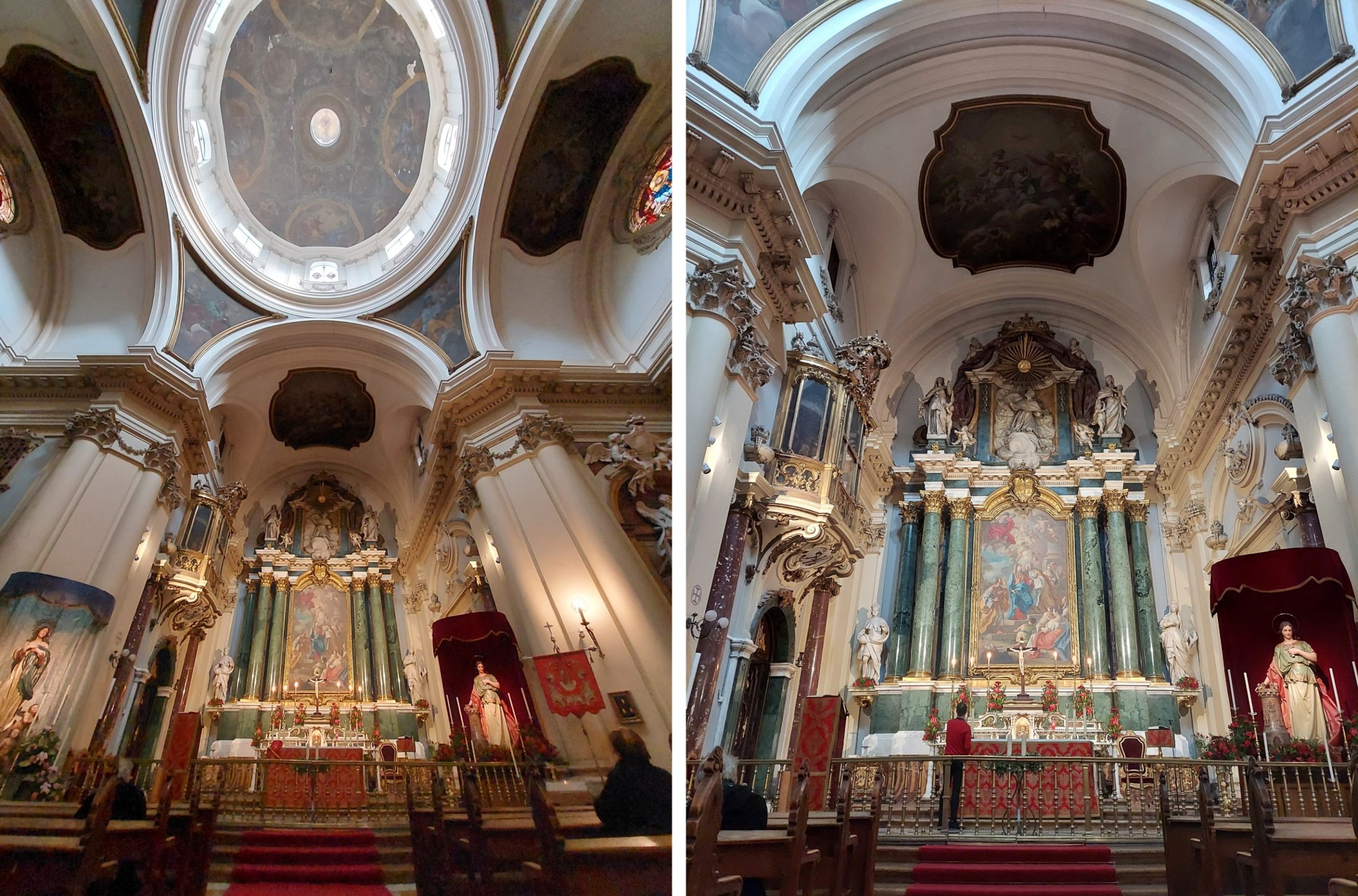
On both sides of the High Altar of the Church of Santa Barbara in Madrid, there are two doors, the one on the left, made of mahogany with golden ornaments, gives access to the sacristy. Above it is a golden tribune closed with crystals that in its zenith shows the royal coat of arms and that communicated with the rooms of the palace. In front of this door is that of the low choir, today a reserved chapel, that in its beginning was a wide grille that disappeared, placing in part of the hollow a double door of panels, above it a medallion with the Child Jesus and two censers to the sides.
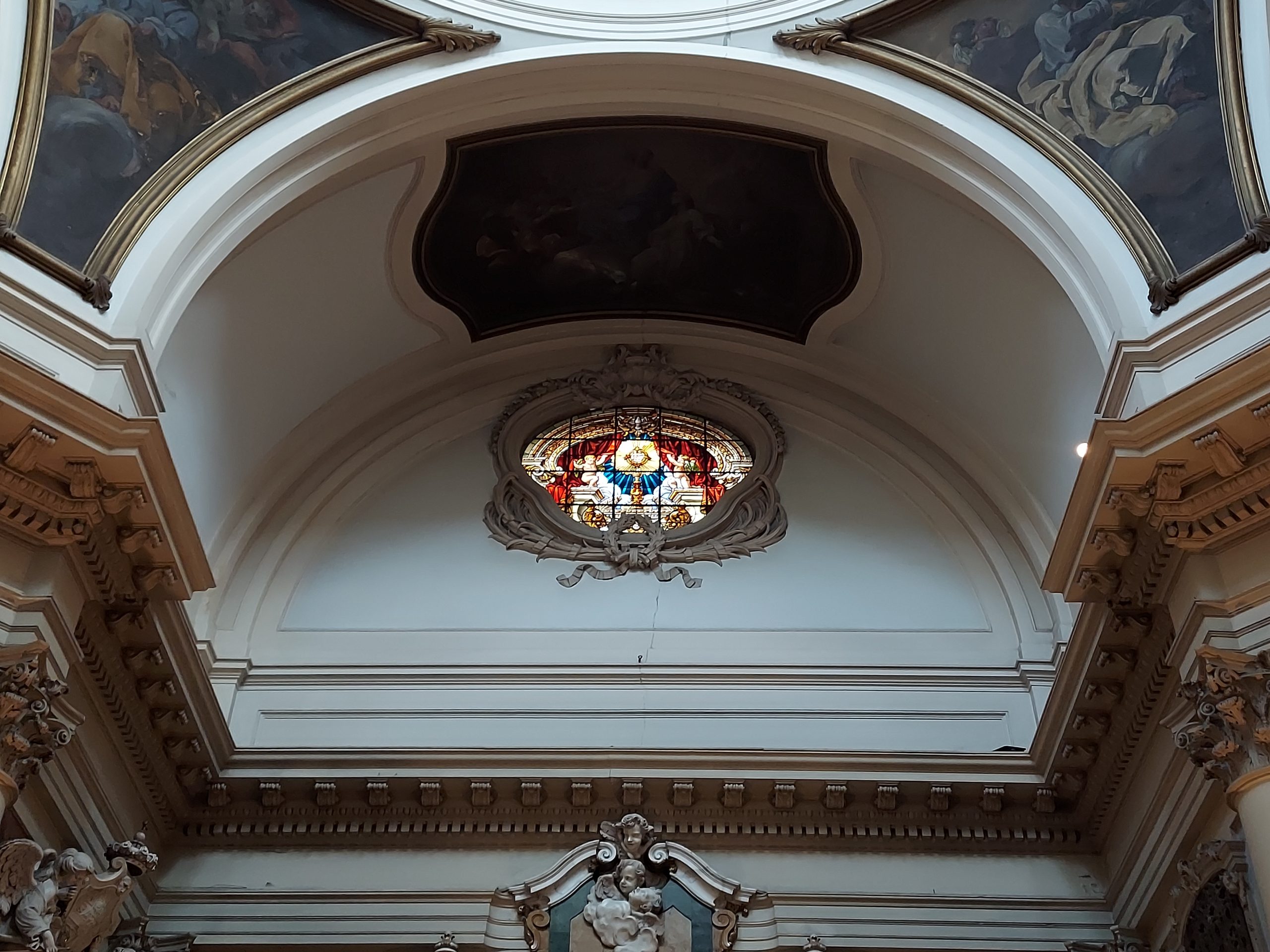
Resources:
https://www.esmadrid.com/informacion-turistica/iglesia-santa-barbara
https://es.wikipedia.org/wiki/Iglesia_de_las_Salesas_Reales_(Madrid
https://www.rutasconhistoria.es/loc/iglesia-de-santa-barbara
